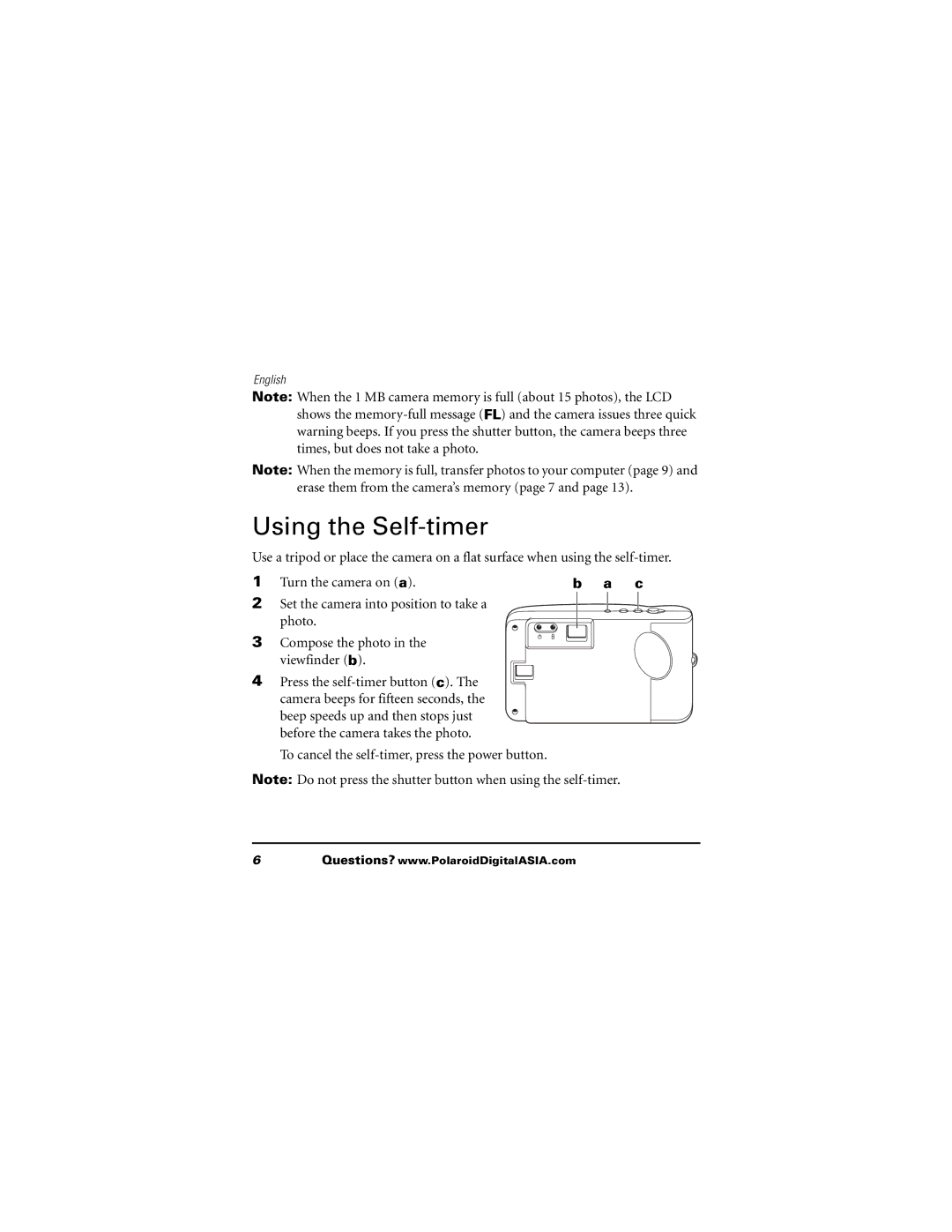620 specifications
The Polaroid 620 is a classic instant camera that epitomizes the nostalgia of instant photography, returning beloved memories in just a matter of minutes. Introduced in the mid-20th century, the 620 model is specifically noted for its unique film format, which distinguished it from the more commonly recognized 600 series. The 620 film size measures 2.5 x 3.1 inches, creating a postcard-sized image that is both charming and collectable.One of the main features of the Polaroid 620 is its simplicity. Designed for both amateur and professional photographers, the camera offered an intuitive operation that made the art of photography accessible to everyone. Users could easily click the shutter button, and in a short time, the photograph would eject from the camera, developing before their eyes. This instant gratification made it popular among families and friends looking to capture memories on special occasions.
The Polaroid 620 utilized a unique film technology that became synonymous with instant photography. This integral film developed itself in a matter of minutes thanks to the chemical processes contained within the film pack. The film's emulsion was created to be light-sensitive, allowing for vibrant colors and rich black-and-white images, making every shot unique and filled with character. The camera also featured a viewfinder, enabling users to compose their shots accurately, although it required some practice to master.
Another defining characteristic of the Polaroid 620 was its design. The camera had a retro aesthetic with a sturdy plastic body that was easy to handle. It was compact for its time, making it convenient for on-the-go photography, whether at the beach, a party, or a family gathering.
Additionally, the Polaroid 620 had limited exposure settings, which contributed to its charm. Photographers often embraced the unpredictability of the camera, producing images with palatable imperfections—faded edges, light leaks, and unexpected contrasts were all part of the allure.
While the production of the Polaroid 620 ceased decades ago, it has seen a revival among vintage enthusiasts and collectors who value its unique ability to create tangible memories quickly. Today, the camera represents an important part of photographic history, celebrated for its simplicity, distinctive film technology, and the joy it has brought to countless users over the years. The Polaroid 620 continues to be a symbol of spontaneity and cherished moments captured in an instant.

